Another town, another hotel, another camera.
One of the problems with being constantly on the move is making sure that you don't leave anything behind. A routine develops fairly quickly whereby everything is checked and double checked before leaving your temporary home each morning. Keeping account of where everything is becomes a lot easier once this routine has become internalised. The old saying "a place for everything and everything in its place" holds especially true when you don't have much space to keep everything in. It becomes apparent very quickly if something is not in its place once you start packing. Unfortunately some things get left behind in places other than your hotel between unpacking and repacking. So it was with my camera. Leaving it in the cable car pod was a costly mistake, but one which I quickly resolved once I reached Na Trang thanks to my old friend Mr Visa.
Vietnam, once divided into North and South by an agreement at the Potsdam conference at the end of the second world war between Russia, the US and the UK, has long since been rejoined politically thanks to 'Uncle Ho'. A new division is evident here though between places that attract tourists and those that remain local. The tourists require a lure to attract them and one way to do this is to play on the historical aspect whether it be ancient monuments, the American war with its roadside cemeteries, networks of tunnels and museums or the years of French rule with its architecture. Hoi An is definitely a place where French architecture is prevalent. During my time in Da Lat I spent half a day just riding around the city looking at many of the villas and other buildings that were left behind when the French left. Sometimes they were not so easy to find as communist planning didn't take into account the future prospect of tourism. Many villas seen in photographs from the 50s' lining the hillside overlooking the lake are now hidden behind gruesome buildings made of slabs of featureless functional concrete. In comparison Hoi An seems to have escaped the communist builders and retains a lot of its French influence.
Na Trang on the other hand has its beach but that seems about all. It's a long beach and very good too but there doesn't appear to be many people using it except in the evenings when families and couples walk upon it or in the early morning when groups of older ladies practice Tai Chi. There are some very wide boulevards and some very narrow backstreets. For me it was a place to go diving. After checking out a few dive centres I booked onto a boat for the next day with a promise that 'everything will be okay'. I had heard this too many times in the previous hour to be convinced by it though. When asked to see the equipment that I would use the phrase "Don't worry, it's okay" became the mantra of the dive shop staff. It was only when I met an American Assistant Instructor at one of the dive shops that I had any questions answered. The option of Nitrox instead of air was also good as I had planned to do three dives. Nitrox is a blend with a (usually) higher percentage of oxygen and therefore less nitrogen, allowing longer bottom times but also less tiredness post dive. The latter is especially beneficial when doing multiple dives with short surface intervals which our plan entailed. When reaching the boat in the morning I was told that only two nitrox cyclinders were on board so the first dive would be on air. Not a huge problem and thankfully the only surprise of the day. The diving was easy, colourful and well guided with snacks and lunch included (while back on the boat, just in case you were wondering) and the boat large enough to sit in the water without being affected by the swell, thankfully saving me from feeling seasick during the surface intervals.
Heading north up the coast the next day I made good progress with a tail wind along the mostly flat highway 1. Long stretches of road lined with small industries, bars, restaurants and rice fields proved to be particularly uninspiring, although there were occasional highlights to keep my attention. I just wish I was able to get my camera out quicker when passed by some of the most bizarrely laden scooters. Many of the scooter riders slow down to take a look before speeding up again only gaining the courage to call out "hello" once they are almost out of earshot. Many times I say hello to them first which almost always brings a smile to their faces, especially the kids coming out of school. When passing groups of these school kids heading the other way I see many of them pointing at me and telling their mates, making those heading my way but in front of me turn their heads to see what they are pointing at. Despite the fact that many of them nearly crash by doing this it's also quite funny seeing the expressions on their faces. The shock of seeing a westerner is almost too much for many. Last night I walked into a supermarket and people were staring and actually following me for short distances in order to get a good look. At one point I decided to follow some of them to see what they did which luckily always ended in laughter from everyone involved as well as those watching from the sidelines.
In one of the many nameless towns which I passed through I was beckoned over to join a group of party goers under a canopy while looking for somewhere to eat. At first declining the offer I was besieged by a number of the men who had been drinking and were insistent upon me joining them for some food and drink. Not wanting to appear rude, and being hungry and thirsty, it didn't take too much for them to persuade me. They were all family members that had gathered for a religious celebration of some sorts and took it in turns to make toasts. Although the glasses were small and the ice cube was large they insisted that every toast ended with an empty glass. Not being a drinker I tried to sip instead of gulp but after a few goes at this I was being urged to down it all. Needless to say I had to leave as soon as the party began to show signs of coming to an end to save myself from falling off the bike when I resumed riding. Later in the day I met a Vietnamese who had been working in Australia for five years and we struck up a conversation while I bought some drinks. He was so pleased to meet an English speaker that he also insisted on buying my drinks and then a packet of biscuits too.
Just before reaching Hoi An I met my first touring cyclists since being in Vietnam. The first Chinese cyclists I have met. The first didn't speak English but Mike (he assured me that was his name) spoke very good English and we spent ten minutes or so discussing routes etc before going our separate ways again. Soon after entering Hoi An I met another three cyclists. Despite having no panniers etc it is obvious to me who the touring cyclists are, especially in a region like South East Asia. David and his partner are from Australia and are on their way to the UK to start a job there early next year. They are joined for a few weeks only by his sister, but once she returns home they are riding overland to Bristol. Small world.
It gets even smaller. At the hotel I booked in to I met a German woman who spent time in Bangkok doing a massage course alongside Stephan, the German cyclist that I shared a hotel with in Stun Treng, Cambodia, about six weeks ago. Coincidences abound.
One thing that I have been hearing repeatedly from other cyclists about Vietnam is the amount of noise on the roads. There are over 90 million people here and the roads are quite congested. Unfortunately the easiest way to get yourself noticed is by the use of the horn. Most of the trucks, coaches and mini buses have aftermarket air horns fitted with the loudest, sharpest and most piercing tones. And boy do they know how to use them. They are used constantly by vehicles through the towns as well as on the open road. You don't have more than 2 minutes without hearing them, often from extremely close quarters and they seem to be used solely for bullying other road users. Many times in the last two days riding I have seen coaches overtaking lorries with horns blaring as they push oncoming scooter riders onto the verge or force them to stop. And for some reason, just like the traffic in HCMC, having someone push you off the road here is accepted quite calmly. . . . . except by me. The frequency with which I am swearing has increased dramatically as drivers continually sound their horn in short blasts as they approach from behind. Even in the market place where people ride scooters through the crowds and between the stalls they use the horn to push other people aside. Just this morning as I was in the process of buying some fruit a woman sitting on a scooter, shoulder to shoulder with me, sounded her horn five times just to let me know she wanted to pass. To say that I am fed up with it would be an understatement. I am wondering how long I can last and whether I head west, back into Laos and head to China from there.
Still, in between having my eardrums assaulted there are some very nice places to visit and Da Lat is one of them. While on the road to Da Lat I met a Vietnamese/Australian who was running from HCMC to Da Lat with a friend and two support cyclists. As we made our way to his girlfriend while she waited for him he told me about his plans to organise runs for Vietnamese people. It seems that there is a potential market for these events here. When we met Tram I couldn't believe she was riding her bike all the way from HCMC to DL. She was riding a single speed bmx with small wheels and the saddle almost as low as it could go. The pedals were creaking enough to make me wonder if she would make it to the next corner, let alone DL. We met up that evening at the next town and spent a couple of hours together over dinner discussing how running events were organised, advertised and controlled in the UK.
My first destination on reaching DL was the Crazy House, an architectural odyssey partly inspired by the work of Gaudi and created by Dang Viet Nga. Overcoming opposition from the Peoples committee of the city of Da Lat as well as the government in Hanoi, Dang has now been allowed to continue development of the house unrestricted. The house is also a hotel with each room having a theme around an animal or insect. It's quite an amusing themepark type of house and an amazing architectural odyssey.
Next stop was the flower garden. Da Lat is set around an artificial lake which is surrounded by grassy banks and parkland. The flower garden is also set next to the lake and includes formal flower beds, a rose garden, statue garden and bonsai section. Topiary hedges have been created including tea pots and a serpentine monster.
The statue garden, including some rather risque (for Vietnam) nudes.
Some more old French buildings.
The picture below on the right is the train station, although it is not used very much any more. There is a train that runs to another local town supposedly up to eight times a day but in fact only departs if there are at least two people aboard, otherwise you may have a long wait. There are supposed to be plans to reconnect Da Lat to the mainline but nobody knows when. One more side trip I went on while at Da Lat was a cable car ride to a local pagoda which is set in beautiful grounds and surrounded by trees. Unfortunately I left my camera in the cable car pod on the way back. Luckily I had backed up all of the photos to my notebook so at least the other pictures of Da Lat can be seen here. I went back to the cable car station to see if it had been handed in. As I arrived the pods were being taken off the cable and parked up for the night which allowed me the opportunity to check them all, but the camera had gone. That will teach me to keep my wits about me a bit more.
Da Lat is a very pleasant city that is surrounded by valleys that have been taken over by market gardeners. There are plastic greenhouses everywhere but luckily not in sight of the city itself. The ride from Da Lat was an undulating affair with an emphasis on gaining height, but at last the crest was reached and with it a dramatic descent back down to the coast and my next stop, Na Trang.
Getting up early to beat the rush is not just for the tourists. A pre-dawn start is ideal for cyclists here as it allows you a short time to ride before the heat becomes too much. And I do mean a short time. Setting off just before 6 am I began a 110km ride to Ho Chi Minh City (HCMC), formerly Saigon. Old newsreel images of the helicopter evacuating Americans atop their embassy before it was stormed, as well as pictures from the war have ingrained themselves in the public consciousness over the years together with more modern stories such as the Robin Williams film Good morning Vietnam. It was with these images in my mind that I rode north on Asia Highway 1 to the capital of the south. Of course, decades have passed since the war has ended and the city is growing and changing at an amazing rate. One change of course is the cities name. In an attempt to do away with images of the past the new government changed the cities name from Saigon to Ho Chi Minh, a mark of respect to the countrys leader and defeater of the 'American imperialists'.
As I rode into the city the one thing that caught my eye was the number of scooters flying around. In each of the countries I have visited in South East Asia scooters are rife, and usually make up a large percentage of the total traffic, but here in HCMC they appear to outnumber all other traffic by a sizeable mark. I have heard that anyone aged 16 and up is allowed to ride a scooter although there are obviously many riders younger. There is no registration required, no test to be undertaken, no insurance or road worthiness test requirements as far as I am aware. Scooters often have their own lanes but are not always confined to them. Most of the time the traffic is a free for all. Traffic here drives on the right, but lots of scooters can be seen riding alongside the kerb against the flow of traffic if they want to get somewhere without having to follow the traffic up the road and turn round. In fact the pavements are used as scooter lanes too should the need arise or if you want to jump to the front of the queue at the traffic lights. And when the pavements are not being ridden on they are used for parking scooters in rows that can be as many as four deep and hundreds long.
What makes the traffic here so interesting though is the way that they ride. Everyone concentrates on not hitting anyone in front of them. If they are behind you then it is up to them to concentrate on not hitting you. This can lead to a few hairy moments when someone begins to overtake you and then turns across you onto another road, after all once they are in front (and that may mean by just half a wheel) then you have the responsibility to not hit them. Traffic light controlled junctions are even more chaotic. Many junctions have countdown timers showing the number of seconds left until the lights change to red or green. This means that riders can preempt the change and go early. If there were a gap between the change to green and the crossing traffics lights turning red then this would be okay but of course this doesn't happen and many of the crossing riders are also continuing through the lights after they have turned red. Couple this with riders setting off just before green and wanting to turn left across the traffic coming the other way and of course with riders from the opposite direction turning left too and you have an instant jam where everyone inches forward and around eachother until the dominant flow is recognised. Once this occurs then it is up to the other riders to inch their way slowly along their chosen path trying to reach open ground where they can continue on their way.
At one roundabout I traversed a number of times there are seven roads, all unregulated by lights, white lines or traffic police feeding onto it. The idea seems to be to get onto the roundabout and keep moving while not acknowledging the other traffic. That's not to say that you are not looking at the other traffic, you simply keep it in your peripheral vision to monitor it but if you look around and make eye contact you have lost. If you look at the other traffic then you have given them the right to keep going forcing you to stop until there is another gap. This gap an be created by inching forward continually until there is not enough space for traffic to cut across you anymore at which point all the other scooter riders trying to do the same create a new dominant flow. It's completely crazy and chaotic but bizzarely effective. The strangest thing about it though is the fact that nobody seems to get annoyed about being cut-up or forced to stop while someone else bullies their way through a crowd. I have not even seen a scooter rider giving another person so much as a stern look, let alone swearing. Considering that they are just a foot or two from eachother it would be so easy to do but It would seem that road rage is not a problem here.
For those wanting to cross the flow of traffic whether on wheels or on foot the best way to do it is to walk or ride slowly so that everyone has time to see you and take avoiding action. Slow and steady is the key. Erratic unpredictable moves create chaos and probably accidents whereas a steady stroll across the road is surprisingly safe.
Turning your back on the traffic the city itself has a good feel to it. There are a number of French colonial buildings that make up a part of the administrative section of the city as well as an opera house, hotels and other buildings. I haven't noticed any war torn buildings but then again I don't think the city itself was 'in the wars' much as far as I can remember. A couple of French and American fighter planes captured during the wars take pride of place on the grounds outside the war museum but apart from tourist souvenir posters and postcards the pictures of war are noticeable by their absence. Maybe this is another way of the new government eradicating the memories of the past and moving on. The younger generations are certainly focusing on the future instead of the past, and American culture is evident everywhere especially in clothes. Traditional costume is rarely seen in the city which has a good reputation for tailoring, and made to measure suits can be completed and delivered to your hotel within 24 hours.
For womens clothing the demise of the traditional costume called Ao Dai (pronounced something like Oh Yay) is a fashion tragedy. The Ao Dai is an elegant, feminine and beautiful garment that accentuates a womans figure without being revealing. A pair of long trousers is covered with a long tunic that has splits from the waist to the floor. Usually made of silk and often embroidered down the front it looks stylish and elegant. Unfortuately this has been replaced not just by jeans and t-shirts among the younger generations but also by shapeless and unflattering pyjamas worn by many women of all ages and for all occasions whether it be shopping, tending stalls at the market, visiting temples, doing housework, taking the kids to school or just sitting around watching the world go by. They really have become the go anywhere do anything trouser suit of the women here. In central HCMC the number of women wearing pyjamas is not as great as in the delta area but the numbers are certainly significant.
My time in the city has been spent finding a few items that have been lost or worn out and relaxing with a couple of friends that I have made. Chris, an actress and teacher from Australia (yes, she HAS been in neighbours) and Matt, a teacher from England at the international school who very kindly put me up in his flat for my visit. When Matt told me his flat was on the 5th floor I was a bit worried about carrying the bike up and down the stairs each time I wanted to use it, but when he told me that there was a lift and that he also had two bikes in the flat already I had a feeling things were going to be alright. In fact when Matt pulled up on his motorbike at the bar where Chris and I were having a drink it felt so relaxed and easy that Chris thought we were old friends from home instead of meeting for the first time. Having somewhere like this to stay while in a city is a huge bonus as it gives you a place to base yourself and also to relax. Hotels rooms are okay but in the city they tend to be clustered together and all you ever see is backpackers and tourists. Matt lives in a locals area and this is obvious by the food stalls and markets surrounding his flat. Street life here is amazing. Everyone is outside relaxing, eating, drinking or just chatting with friends. You can feel a real sense of community.
Five nights in a city is enough for me so I planned my route out of town and headed north east to Da Lat. Matt was up and on the road early too as he regularly meets up with a group of riders to get some miles in before the heat hits. His route was different to mine so we said goodbye at a major junction and with his directions in my mind I continued on my way. There were quite a few walkers, joggers and runners out in the pre-dawn light as well as a couple of groups or road riders who zipped past me. So much for beating the traffic. It's about 270kms to Da Lat so I'd better get going.
Entering Vietnam I began the usual round of new-country chores that need to be completed. A new sim card for my phone, currency exchange and familiarisation, new words to learn for the most basic verbal interaction and of course deciding on a route. I had already begun the last one while resting in Kep but no real decisions had been made except the obvious one such as visiting Ho Chi Minh City. This was a few days ride away though so a few intermediate stops were needed. Can Tho is the largest city in the delta and boasted the largest floating market which had been recommended to me by a young French couple so I decided to head there first.
Floating markets are one of the multi-sensory experiences that most people visiting South East Asia look forward to. The image of the floating market has been brought into our homes for years. Images of little old ladies in conical hats with big smiles drifting along in small boats selling fruit, vegetables, spices etc in colourful heaps is a beguiling image and one that is played upon to make Can Tho the ‘go to‘ place for a unique waterborne experience. Getting up early to beat the tourist crowds is the recommendation from the tour guides, so there we all were shuffling bleary eyed in the pre-dawn light towards a slippery plank of wood leading down to the landing stage. An armada of tourist filled boats, all determined to beat the rush.
The sun rose as we were cruising upriver, our driver more interested in making animals and bracelets out of reeds. They were in fact very good but they hampered our progress upriver due to the meandering route we took as she concentrated more on twisting and turning the reeds instead of preventing the boat from doing likewise. In order to get to the market you will have had to motor for about 30-40 minutes upriver. At this time of the morning the river is a cool place to be, not just for the breeze created by the boats progress up river but also for the diversity of boats and people starting or going about their daily lives. The Mekong truly is the lifeline of this area.
So there we were rocking gently in our boat, three tired tourists and one boat driver. We looked around the market at the number of boats doing business. There weren’t many. The reality is that this market is mostly for wholesale traders rather than housewives doing their daily food shopping. Instead of the little old ladies bringing their goods to market we saw large commercial river barges loaded with perhaps hundreds of tonnes of produce. Barges display their wares by hanging an example from a pole. Pineapples, water melons, tomatoes, cabbages and onions were plentiful. But these barges dwarf the other boats that move among them. Most of the small boats on the river are the ones carrying tourists or an occasional noodle soup vendor providing overpriced breakfast to the tourists who had to be up too early to grab breakfast ashore. It was at this point that you are able to see just how many tourists are willing to get up early in order to beat the tourist crowd.
As all of the tourists are getting up early to beat the crowds you are participating in a self-defeating excercise. Instead of little old ladies in little old boats the only people I saw that were taking an interest in what was happening were tourists with cameras. The number of tourist boats easily equaled the number of trading boats and possibly outnumbered them. This of course is exactly what we were trying to avoid. Perhaps the buyers and sellers have come to realise this and have done all of their deals pre-dawn or are instead waiting until all of the tourists have passed through before coming out onto the water. We were then taken on an extra portion of the tour, 'just for us'. A visit to a noodle factory, where we saw many of the tourists that were at the market at the same time as us. This was in fact the most interesting aspect of the morning on the river. However the boat driver became very friendly and talkative when at the noodle factory and kept repeating how hot it was and how thirsty we must be. What a surprise that the next stop was along the bank to a restaurant. The ploy was so obvious that we told her we were not interested in drinking coffee and that we would rather be on the river. She kept asking us why we were not drinking but soon gave up when she realised we had brought our own water and were not lying down suffering from dehydration.
Once we left the noodle factory the boat driver told us that we could take a backwater route on the return. This was a lot more interesting as we could see everything that was going on around us on both banks and in many places into the huts and houses that were lining the river. People were going about their business as normal. Small rickety bridges crossed over our heads as we made our way upstream and children called out and waved as we passed. This was much more interesting. Until the banks became barren and the people were left behind. It was now a meandering journey through dirty smelly backwaters.
What did we see at the market ? The result of a well oiled marketing and touting system aided by Lonely Planet and Rough guides. I didn’t see any buying and selling from locals nor were we steered close enough to many of the boats so that we could take a close look at what was on offer. It would appear that buying and selling is for locals only, if in fact it happens at all. For all we know the market could be a charade of boats milling around with no purpose except to draw the tourists out in number and provide an income for the tourist boat drivers.
Total trip time 4.15
Time spent at floating market 30 minutes of which 15 were spent eating noodles.
Time at noodle factory 30 minutes
Time spent at cafe until she realised we werent buying drinks 10 minutes
Total time spent in an open boat with no cover while the sun climbed higher taking the temperature with it 3.30
It was with this disappointment in mind that I decided to skip my other planned stop in the delta at My Tho and head straight for Ho Chi Minh City (formerly Saigon). This involved a long afternoon in the saddle, an overnight stop and an early morning blast along Asia Highway 1. Although the region is a mass of people moving in all directions HCMC takes the prize as the most ludicrously congested, chaotic city I have experienced in the region so far. Scooters appear to outnumber all other traffic by at least 50:1. The traffic is a constant flow of undisciplined, unregulated and unsegregated mayhem.
And I love it.
As an ex London despatch rider I just couldn't stop myself from diving straight in and tackling it head on. One roundabout has seven roads entering it with no control whatsoever. Traffic enters as quickly as it can, pushing and inching forward until the road ahead becomes clear again. It's total mayhem but it works. And so far I have not seen one accident in all of my time in Asia.
I'll tell you more about it later.
One aspect of South East Asia that I have been looking forward to is the beaches. I’m not one to lie around on them all day, but the sight of palm fringed white sandy beaches being lapped gently by crystal clear water is one that always brings a smile to my face. It was with this in mind that I left Cheung Ek, the killing fields memorial site, and began the ride south towards the coast.
I had not seen the sea since I arrived in South East Asia eleven weeks ago. Hearing so many people tell me how much I would enjoy the beaches, especially in Vietnam, I was looking forward to my ride to the coast. As I am now at the southern-most point of my journey and the temperature is rising on an almost daily basis I knew the ride was going to be hot but what I hadn’t counted upon was a hot head wind that dried my mouth as I rode. The ride to Kampot, the provincial capital, was a long hot morning that literally took my breath away. Four cold fizzy cans, at least three litres of iced water and three ice-creams as well as noodle soup for breakfast helped get me to my destination. And all of that in just 4 hours of actual riding.
The road in to Kampot was not auspicious. Noisy and congested with trucks and cars overtaking each other indiscriminately while being buzzed by dozens of scooters and bicycles. However, once I turned off the main highway and rode past the market into town I could see beyond the crumbling facade. The town has a run-down French Caribbean feel to it, just as I imagine Haiti to be, “a sleepy place with a relaxed atmosphere and one of Cambodia’s finest (though run-down) ensembles of French colonial architecture” – Lonely planet. What the LP guide doesn’t say however is that in the morning light it could be just another run-down town. The French colonial buildings are mostly in a state of severe disrepair if not falling down completely. Many are squatted and their pavements used as street food eateries. Perhaps the French would be happy that despite the buildings having seen better days at least the cuisine is still good. My one night in Kampot was also rewarded with one of the tastiest meals that I have experienced while in the region. A simple plate of noodles, bean sprouts, a fried egg and a small pastry filled with what seemed like cabbage or spinach all covered with a sweet curry sauce with a spicy ingredient that I failed to recognise. I don’t know what the dish is called but it tasted fantastic. The cost was the standard fee for most street food, just $1 or about 66 pence. I was tempted to ask for a second plate but knew that I would not be able to eat it all if I did. Instead I wandered further down the street for desert, a fruit shake. Walking back and a street stall was making mouth-watering sweet-milk (condensed milk) and ovaltine sprinkled crepes. Delicious. I had two. Considering I must have sweated enough calories this morning to make up for at least three I think that I showed considerable restraint.
Still on a culinary note, one peculiar aspect of Kampot is the choice of roundabout adornment. The largest roundabout in the town pays homage to the locally grown fruit Durian. Kampot is the countrys largest Durian growing area. It is regarded as the king of fruit by those who like it but to others it's extremely distasteful. First described to me by its smell as "the odour left when a rubbish bin has not been cleaned out properly and allowed to stand with rain water in it". Not the most mouth-watering description. I must admit that I couldn’t get over the initial revulsion brought about by my first smell and even after holding my nose while tasting and chewing it I couldn’t face swallowing it. Luckily for me there are plenty of mangos around to help take the taste away.
On leaving Kampot on Highway 33 I immediately found myself on a hard compacted dirt road. Weaving around potholes and rough patches while riding through clouds of dust kicked up by passing trucks reminded me of other touring cyclists descriptions of romantic sounding sections of road. There is a feeling seldom experienced while on the road but instantly recognisable to those who have in fact felt it. It’s hard to put it into words but feels like a sense of belonging to the place you are in. I suppose it could be likened to a sportsperson being ‘in the zone’, but is much more transitory and illusory. Contrary to the sportsman you can’t create that feeling, you can’t just focus your mind or carry out a routine to ‘get yourself’ into that zone, you just recognice it when it happens. It’s not a one off feeling as you may experience it often or even regularly but each time it will be unique to that one spot, not a zone as a sportsperson feels but an aura of belonging to that place for a time. It may be a few seconds or it may last for minutes but recognition of that moment makes you smile to yourself even though you know that that smile itself will mark the end of that brief moment of belonging. A little like waking and realising you have been dreaming, wanting and even trying to continue the dream but knowing that the thread has been broken and you are back to the present, the here and now. Recognition brings instant loss, but also another smile. You know you have been there and that you will remember it for a long time if not always.
About 30 minutes after leaving Kampot along a dusty, potholed road and glimpsing the ocean through palm trees for the first time on this journey I had that feeling. A truck had just thrown up a cloud of red dust, a scooter buzzed past me, a cow was beginning its slow meandering walk into the road and just for a short time I was lost to the moment and place.
Approaching the turn off to Kep I met a lone female cyclist coming the other way. I recognised her for a tourer immediately despite the lack of panniers and other baggage. It was the bike and the clothing that gave it away. Any bike that is rented here is usually a mountain bike with front suspension or a town bike. Snetzana Radojicic was instead riding a rigid mountain bike with ‘butterfly’ handlebars, a bar bag and pannier mounts. As with all touring cyclists (except for an old Dutch couple a group of us passed a couple of times in Laos) it’s customary to stop for a chat, to find out where they have been, where they are going and to gather information and ‘gossip’. Snetzana (translated from Serbian literally means Snow White) has been on the road for twenty two months, initially with a boyfriend until they parted ways, now continuing solo. She was on the way back to Kampot to collect her gear and then return to Kep the following day where she had already arranged cheap accommodation. We had spent about fifteen minutes at the road side talking in general but I could tell there was much more to be heard from this woman. Agreeing to meet the next day I continued on to find the place for myself and await her arrival and to hear more of her tales of adventure.
‘Snowy’ as I have come to call her is funding her trip by writing articles for an internet forum in Serbian as well as blogging for her own site. She is also the author of a short novel and a collection of short stories. National Geographic have also taken two articles from her but have not as yet published them.
She also told me of a British cyclist that funded his trip by ‘selling’ kilometres of his journey on the internet. Apparently people who have always wanted to visit certain places but have not as yet had the chance to do so make a contribution to his journey and pay for kilometres in their name. It sounds like a great idea don’t you think ? So, if you have your credit cards handy . . . . .
There are numerous guest houses and burned out shells of what were once opulent villas set in their own spacious grounds on the road into Kep. Each one individually styled. Obviously this was once a place to be. The crab and seafood market is now a haven for tourists from those guest houses and appears to be more a collection of restaurants than a working market. A kilometre along the sea front brings you to the beach area and you go another kilometre again before you reach what is the main centre of Kep according to Google maps. This is actually the furthest point away from most of the commercial and residential areas. A network of streets set out in a grid formation to the north of the main highway has long since fallen into disrepair. What was once a residential area with individually designed villas set in large gated grounds has now become a line of empty or burned out shells. Many plots are actually devoid of any buildings being used instead as grazing ground for cattle. What were once garden walls have now become retaining walls for the herd. The roads themselves are now nothing more than extremely overgrown rutted farm tracks. Kep was once a playground for the richer French. It is now becoming popular again with Cambodians especially on weekends so I am told. It's Friday as I write this so maybe tomorrow it will be a bit harder to secure a seat or a hammock on the sea front. Yes, even in paradise life can have its drawbacks.
Cycling along country roads and stopping to talk to strangers has become normal since I have been in Asia. The quieter the roads and the smaller the town the easier it is to find someone to talk to. In fact it's usually hard to find a space where you can sit without being approached or at least stared at. Not that it's been intrusive. I've heard accounts from other touring cyclists of locals sitting at their table watching them eat or even videoing them. Luckily I haven't had to endure this, yet. Entering a major city for the first time since leaving Bangkok eleven weeks ago has been quite a revelation though. There are people everywhere, but not one of them wants to stop and talk, most don't even look at me.
Whenever I enter a new town it's hard to know where to go to at first. At least in a small town there aren't too many side roads to choose from. The first job is normally to find a bed for the night, which is often a case of finding the only guest house or hotel in town. That's assuming that there is in fact one in the town !
When entering a new city however, the trick is knowing how far to go towards the centre or which area to head for. Do I want to find a cheap bed, a bed that's close to the centre, a bed with amenities close by or just anywhere to lay my head. No-one is interested in a foreigner on a bike in a city, after all I'm just another foreigner.
Phnom Penh is the same as all cities. Traffic, people, a multitude of choices. The roads are chaotic to say the least. Everyone is trying to get somewhere fast. And when you enter the fray without an idea of which way to go you are fair game for anyone to run into. The trick is to choose a route quickly and push yourself into any available gap with enough confidence to show that you won't be pushed out again too easily. A former London despatch rider mentality helps with this of course.
At least in Phnom Penh I had somewhere to head for. A recommendation from a couple of new friends I met in Siem Reap led me to the headquarters of Smallworld. The friends are Arpi and Zita from Hungary who are cycling around the world on recumbent bicycles for their honeymoon. They have been on the road for 20 months now with about another 2 years left at their reckoning. You can take a look at their blog here: http://360fokbringa.hu/en
Smallworld (http://smallworldcambodia.com/) is a social enterprise set up to foster development of ideas and to encourage new entrepreneurial talent. They provide office space and guidance on business startups as well as accommodation for those wishing to stay and study here. Luckily for me they also welcome travelers. There is an informal and friendly atmosphere here that allows people to relax and express themselves openly in a supportive environment.
In the city itself the main tourist attraction is the royal palace ans silver pagoda. The palace is in fact a gilded cage for the King. The Peoples Party of Cambodia run the country, the King is nowadays merely a titular role, but as the King is unmarried at the age of 56 and with no heirs it's more than likely the end of the line for this monarchy.
My first mission in PP was to visit the Vietnamese embassy. This is the first time on this trip that I am having to apply for a visa prior to reaching a border. Up until now I have been able to turn up and get a 'visa on arrival', in effect an entry ticket. This time a form had to be filled in and left along with my passport and the necessary processing fee. A return visit the next morning and there is a new three month Vietnamese visa covering a page of my passport. I chose a three month visa as there are 1600 kms of country to cycle through. It's possible in a month but that wouldn't give me much time to stop and see any of the country. I certainly don't envisage taking three months but it saves the hassle of getting an extension later should the need arise. Let's just hope that when I get to Hanoi and apply for my Chinese visa things go as smoothly.
Next on the list of things to do was to visit the former Chao Ponhea Yat High School, later renamed Tuol Sleng. Ask anyone (of a certain age) what they know about Cambodia and they will tell you about Pol Pot and the 'killing fields'. Tuol Sleng high school was taken over by the Khmer Rouge regime and turned into security prison 21 (S-21). During the five years of the regimes dictatorship up to 20,000 people passed through here, one of more than 150 such prisons throughout the country. Phnom Penh itself was by this time deserted as the entire population was forced to move to the countryside within three days of the Khmer Rouge entering the city. They were forced to work in the fields as part of an agrarian socialism project that ultimately saw up to a quarter of the countrys population die of malnutrition, poor health provision and of course torture and execution. Special camps were set up to cater for the mass executions and burials that took place as there wasn't enough space in the city, hence the name the "killing fields". These photographs are of S-21.
The best known of these killing fields is south of Phnom Penh at a place called Cheung Ek. Trucks would bring prisoners from S-21 to be killed here. Bound and blindfolded they were lined up and clubbed or hacked to death while kneeling next to their grave. The remains of 8985 people were exhumed in 1980 from mass graves, while 43 of the 129 communal graves have been left untouched. Over 8000 skulls are on display in the Memoral Stupa, which was erected in 1988. The site is just under 6 acres in size and can be walked around in about ten minutes. It's unbelievable that so many people were buried in such a small area, and that there are another 150 such sites dotted around the country. Today the site is a peaceful memorial to those who died in the name of one mans crazy idea of utopia and later of his paranoia. The following photographs were taken at Cheung Ek.
What's left today is a memorial to mans inhumanity to man. But what I found most disturbing was the way the west refused to do anything about it. It was neighbouring Vietnam that invaded the country to oust the Khmer Rouge. Many of the Khmer Rouge soldiers defected to the Vietnamese led invasion while the leaders including Pol Pot fled to the west of the country where they still retained power near the Thai border. Surprisingly it was not until 1998 that Pol Pot died, believed to be poisoned by one of his former colleagues. The west and the UN, ever fearful of the spread of communism, still recognised the Khmer Rouge as the rightful rulers of Cambodia as it was thought that a Vietnamese supported government made up of ex Khmer Rouge leaders was no better. This way the Khmer Rouge were still allowed a seat at the UN until 1994. For those that remember being taught at school about the genocide it's hard to believe that the Khmer Rouge was still operating up until the end of the last century, over 30 years since the initial take over of the country.
A chilling reminder of what one mans unbridled power can do to a nation.
 Courtesy of John Borland http://www.morffed.com/2013/Cambodia/28441160_X7Czv4#!i=2409053941&k=RJtg25T Preah Vihear was to be the start of a few days visiting temples. Every few miles or so in Thailand and to a lesser extent in Laos I passed temples without really thinking of visiting them. They are all quite small and similar in design with seemingly very little apart from the choice of which colour to complement the gold to tell them apart. This temple complex promised to be different though. Whereas modern temples are functional, the older ones tend to be grandiose affairs, giving a show of importance and authority. Predating Angkor Wat - making them about 1100 years old - Preah Vihear is much more in tact than a similarly dated structure near Champasac that I had visited in Laos, and without many tourists. It also helped that I slept next to the ticket office and was therefore the first visitor of the day. These pictures are of Preah Vihear.
_After a night spent looking at the mountain upon which the temples sat I caught a lift to the top on a scooter, thoughtfully provided for a fee of $5 by the ticket office. Entrance to the temples themselves is free of charge but I was disappointed not to be able to ride up there myself. I had been kicking myself for telling them I wanted to sleep on the mountain, thinking that I cold have sneaked up and found somewhere to pitch the tent but as we approached the top I saw that that would not have been possible as there were border police and tourist police everywhere. It was still early though and I had the temple pretty much to myself to start with apart from even more tourist police and leaf sweepers. The temples are laid out along a single axis so that you start from the bottom and work your way to the top of the mountain towards the fifth temple. Some of the buildings were fairly well preserved with others in a state of ruin. Being more accessible from Thailand than Laos the number of visitors is limited by the border being closed here. The atmosphere is certainly helped by this fact. I spent longer there just sitting and looking than walking around. A couple of hours later and I was heading back down the mountain to collect the bike and make my way towards Siem Reap and the jewels of Cambodias tourist crown, Angkor Wat and Angkor Thom.
There was one other temple along the route towards Siem Reap that seemed worth visiting - Prasat Bantea Srei. I rolled up to a greeting of smiles and was pointed to the temple entrance with assurances that my bike would be well looked after at reception. A short walk later I was at the entrance where I had to show my ticket. No-one at the reception had mentioned a ticket when I arrived so I went back to find out where I should get one. Siem Reap came the reply. "Not here?" I asked. "No Sir. We don't sell tickets. You have to buy it at Siem Reap". Have you ever known a tourist attraction alongside a well maintained road to have its ticket office almost 40 Kms from the entrance ? I couldn't believe it. Imagine how many people make the trip out there from the town just to find out that they have to retrace their steps in order to pay for the entrance ticket. Luckily I had not done that but it seemed crazy not to be able to buy a ticket on site. Their reasoning was that there is one ticket for all temples and that the main temples are at Siem Reap and that is also where all of the hotels were. Therefore the ticket office was there too. Logically sound but I couldn't help think that they were short changing themselves to some extent by not selling tickets here too.
These pictures were taken at Angkor Thom.
After some initial disappointment and frustration I set off once more for the last leg of a 170km day to Siem Reap. Once there I got to talking to three Alaskans (it wouldn't be fair to call them Americans, they were too cool and friendly) who told me that they had booked a tuk-tuk for a 5am start the next morning and that I was welcome to join them. They were going to the temples for the sunrise over Angkor wat. It sounded like a good way to start the day and so I accepted the offer gladly. Unfortunately I was up late that night trying to sort out an issue with my cash point card. Nat West in their wisdom had decided to put a block on my card "because there is a lot of fraudulent activity in that part of the world". I had used the card in Thailand and Laos with not problem but obviously Cambodia didn't pass the trustworthiness test. The only way I could contact them was via my mobile and so it cost me quite a bit in order to convince them that it was in fact me that was entering my unique pin, which is known only by me and unchanged for the twenty years that I have had the account. It was gone midnight when I finally got to bed and the alarm was set for 4.30. However, we had a great day together visting four temples in all, in an area that could quite easily keep a temple goer fascinated for at least a week. We took in Angkor Wat and Angkor Thom, the two largest temple complexes as well as Bayon and Ta Phrom. The temples are set in stunning grounds and deserve more than a day to make the most of them.
The next four pictures were taken at Angkor Wat with the last two taken at Ta Phrom
 Courtesy of John Borland. Click on the picture to go to his website These temples are more than a thousand years old and considering they were left to decay for a long time they are remarkably in tact. At least, Angkor Wat is. Angkor Thom is very close but it is believed that it was 'lost', or at least forgotten about for a long period. During this time nature took hold and over the years has installed itself as a prominent feature in the temple. Everywhere you turn there are huge tree trunks growing through and around walls and buildings with branches and secondary roots snaking their way between what would originally have been cracks between stones, but would now be chasms if the trees were taken away. Surely this could never be done. It would spoil what has become a marvelous example of natures ability to take back what was once taken by man. It's the medieval equivalent of the Hare and the Tortoise. Slowly but surely the march of time will take its toll when left to its own devices.
These pictures were taken at Angkor Thom.
As I mentioned above the grounds of the temples are in themselves worth a visit. Set in beautiful parkland with tall trees and close cropped grass it's easy to see monks strolling around contemplating whatever it is that they contemplate. There are terraces and paths to stroll along as well as steep climbs to each successive level of the outside walls that require you to almost crawl up the face of the temple. Maybe that is why they were built that way, to put you in the appropriate position to contemplate your being as you ascend towards a higher place metaphorically as well as physically which is of course one of the aspects of Buddhism.
The next four pictures are from Bayon and show the many turrets each with a face on all four sides, The rest from Angkor Thom, except the last one which was taken by John Borland.
It had been a long day with a lot of walking and climbing when we decided to join the thousands of other sightseers and head for home. As Grace Jones put it in 'the apple stretching', "A herd of tourists limping homeward, having bitten off more than they could chew". Aching limbs and empty stomachs. It was a large meal followed by a large icecream later that we said goodnight and agreed to meet the next morning before they took the bus to Pnom Phen. I shall be heading there myself in a few days to get my Vietnamese visa before I hit the first beach of the trip on the south coast. I'm definitely looking forward to that.
A few days resting among the tranquil islands of Si Pan Don was a much needed break after the frankly boring ride south on Highway 13 through Laos. The road had been not only flat and featureless but long and straight. Each small rise would bring the hope of something to see over the crest but it was usually not the case. The islands on the other hand were small, individual havens of peace and quiet, except for Don Det, the centre of the islands thriving backpacker scene. Anne, Cormac and I had left Don Khong by riding almost to the southern tip of the island and catching the ferry across to Don Som. This ferry was made up of three boats lashed together with a platform allowing larger loads to be carried. Don Som has no roads so it was even more fun than normal riding down dirt paths between the houses and dusty single track along the ridges between the dried-up rice paddies.
Very soon we were at the southern tip of Don Som and catching another ferry across to Don Det. As we approached the landing beach it was obvious that this island was going to be different. About a dozen young backpackers were sitting in the water with beer cans alongside a water buffalo (without a beer can) cooling off. After finding ourselves some bamboo bungalows to sleep in the pace slackened off very quickly with the next couple of days consisting of meeting for breakfast, lunch and dinner with very little else happening except for swinging in a hammock and sipping cold drinks. One more ferry and we were once again heading south on highway 13 towards the Cambodian border about 30 kms away. The border crossing was easy enough, just pay the visa fee (entrance fee) and get a stamp in the passport and once again we committed ourselves to another boring straight road to the first town of any size - Stung Treng. Early the next morning I said goodbye to Anne and Cormac as they made a 5am start towards Phnom Penh. Later I made my way to the local market and met Dina and Christian, a Swiss couple cycling with the most loaded bikes I have seen so far. Another couple heading north to China. On returning to my hotel I met Stephan, a solo German cyclist who has been on the road for 20 months and was also heading for China. He stayed one night and headed north. The next day I received an email from Christian telling me they were having lunch with Stephan and were riding north together. Small world.
I left town myself the next morning taking a ferry going west across the Mekong and headed out on a dirt road towards Siem Reap and Angkor Wat via a much more remote temple complex at Preah Vihear. Preah Vihear is situated less than one mile from the border with Thailand, an area that has been argued over for many years and even quite recently fought over between the two countries. The UN intervened and made the decision that the area is Cambodian as all parties had previously accepted the mapped area showing it to be within Cambodia, although this was still to cause me a minor headache when I reached it. The road from the ferry was hard packed dirt and gravel with a lot of dust kicked up by passing vehicles and very little in the way of habitation. I had heard of a new road being built but couldnt figure out why this road was not being tarred as it as a good straight road with new bridges over the small streams. 100 kms later I came to a large town called Tbeang Meanchey. Considering that this was the provincial capital and a thriving town it seemed strange that there had been no tarred road towards it. Later I found out that the road I had ridden was in fact the new road. There had been no sign of the old road from the ferry port. Somewhere I completely missed the only paved road from the ferry. In fact I hadnt seen any tarmac since getting on the ferry that morning.
The next morning I pushed on and got to the ticket office and tourist police HQ for Preah Vihear towards the end of the day. Deciding to spend the night on the top of the mountain as close to the temple as possible I went to get my ticket only to be told that I was not allowed to ride my bike up there as it was too steep. I was told in the gentlest and quietest way that the only place for a foreigner to sleep was 25 kms back along the road that I came in on. This was down to tourist security and my personal safety. . It was about one hour to sunset and the thought of retracing that much of my route, only to have to ride it again the next day was not something that appealed to me, Seeing an empty barracks next door I suggested that the safest place for me to stay would be with the tourist police. I seemed to have played into the policemans hands. What followed was not so much a shakedown as an invitation to shake myself and then hand over what ever fell out of my pocket. It was almost as if I had suggested it myself. Just a couple of US dollars which included food would provide me with a place to stay for the night - in a tree house ! I cant remember sleeping in a tree house before. It even had a view of the mountain upon which the temple - in fact 5 temples - are built. Wild camping with armed security. Does it get much better ?
It's the unexpected meetings that are making this trip so special. Robert and Kung and later Martin and Goi in Thailand. Paulo in Huay Xai, Ron and Maaike in Nong Keuw and Emma, Cynthia and Graham on the boat to Luang Prabang. Mandy and Jacques, a south African couple of cyclists I met in Paksan. All have tales to tell about their travels and their plans. Some you meet once, some you share a route with and some you will bump into again in the most unlikely of places later on your travels. I also met a Dutch blonde that made me fall head over heels. Unfortunately the blonde was a guy and the fall was from my bike. I had been playing cards the evening before with his friends and when they caught up with me the next morning on the road Bram offered me a tow. Normally I wouldn't have accepted but the day was as hot as any I have experienced so far and the road was long, straight and featureless so I decided to grab the pillion hand rail and save some time. Acceleration was smooth but it didn't stop me veering towards his back wheel. I could see what was going to happen but unable to stop it. My front wheel made contact with the scooters rear wheel and before I knew it I was tumbling along the road.
I landed with a thud, I heard something break with a glass-like splintering noise and rolled to a stop. I have wondered a number of times how a fall on rough tarmac would feel. If I could escape with minimal injuries I would consider myself fortunate. The thought of gravel rash is not nice especially when on a long trip. Thank goodness I was only traveling at about 10 mph. I knew the sound of the break wasn't from my body but couldn't figure out what it could have been until I righted the bike. I suffered the tiniest grazing to one shoulder, one elbow, one ankle and one knee. The only real pain was from my right thigh. It felt like someone had given me the worst deadleg ever. As it's so hot here at the moment I can't wear a helmet while riding. Shaken to think of the possible outcome of this type of accident I counted myself very lucky indeed. The splintering noise I found out was my rear brake lever. Snapped off at the root. There was no way I would be able to get any leverage on that again. The Dutch guys waited around with me and once I was ready to continue they stopped ahead and waited again to make sure I was okay. When we parted again we agreed to meet up at the guest house in Thaekek later. My leg was okay to cycle with but I was sure it would make me suffer in the morning. Luckily this was not the case. I was able to ride around town looking for a bike shop to replace the brake lever. I managed to find one in a shop that was stocked high with Chinese manufactured goods. Made completely of plastic, it flexes around the clamp every time I pull on the lever. Still, at 45 pence for the whole assembly I can't expect too much from it. It will be interesting to see how long it lasts though. Once fixed I set off south once more. Next stop Seno/Xeno. I decided that the next day was going to be a rest as the buses run along this road. I was going to take the easy option for a day and avoid the boredom of two days riding an endlessly flat and straight road with nothing of interest along the way.
I turned up just before 8am to get the bus. 8 oclock came and went. The bus apparently had done the same. When I asked a few of the tuktuk drivers about the bus south they told me that I had to go to the bus station. How stupid of me. Apparently the place where information and tickets were obtained and where the buses pick up and set down passengers isn't the bus station. Another one was due at 10 oclock though so I waited for that one. 10 oclock came and went too. No bus. 12 noon I was told. At 12.30 I gave up and started riding again. Straight into the hottest part of the day. Luckily for me the clouds started to form about an hour later. Looking ominously dark though they threatened to open at any time. I pulled into a guest house car park just in time only to find that the guest house wasn't open yet. There was nothing for it. Get back on the bike and ride fast through the rain. Just my luck that when I reached the next guest house fifteen minutes later the rain stopped just as I did. Still, I was warm despite being soaked and I was going to have a shower anyway. Plodding south I got to Pakse about 5pm the next day. It had been a long two days riding to get there but I had decided to stay a couple of nights and have a rest day. I spent the evening talking and eating with a young South Korean man who had just got in that day too. It was interesting to hear his thoughts as South Korea is vastly more developed than South East Asia. He also told me a lot about China. Everyone that has been there seems to have a different opinion about the country, but considering the size of China it's quite possible that every one of them are correct. Their opinions may just have been formed in different places and from hugely different perspecives. Unfortunately apart from a very large market and some very tasty and cheap icecream the town of Pakse didn't seem to have much else to offer and so I decided to continue further south the next day and take a rest somewhere else. I crossed the river Mekhong and headed for Champasac and the ancient Angkor era temple that is close by. The temple was a disappointment as there are only ruins there but while there I met up with Peter and Nicky Murphy from New Zealand who were on a cycling tour of Laos (www.mytripjournal.com/pedallingon). They also told me of an Irish/German (Cormac and Anne) couple that were just around the corner who I met with a few minutes later. That evening we all met up for a meal and to swap stories about our tours and life on the road.
Cormac and Anne have been on the road since October and are heading south with the hope of a work permit/residence visa for Australia (www.crazyguyonabike.com/doc/chinasingapore). Peter and Nicky head home in about a week but for a short time at least our paths run together. It's the first time I've had company on the road for more than a one day ride. We are all heading for Si Pan Don or Four thousand islands. Peter and Nicky can't afford to stay long as their flight home leaves from Pnom Phen within the week. A brief encounter but a good one all the same. If I am lucky enough to go to New Zealand again they will definitely be on my list of people to visit. Cormac and Anne will be crossing into Cambodia about the same time as me, which gives us awww.crazyguyonabike.com/doc/chinasingaporebout 4 days to enjoy the area and take in a few islands and sights before we make the short journey to the border. From there their ride takes them south to Pnom Phen, while mine will take me west towards Angkor Wat and Angkor Thom. he next morning Anne, Cormac and I headed for the ferry point to take us back across the Mekhong so that we could join up with highway 13 once more. The 'ferry' was made up of two small boats lashed together with a planking across them to allow a more stable platform. I don't know why but everytime I take my bike onto a boat I am grinning from ear to ear at the thought of where I will be going next. I already knew what highway 13 would be like; flat, straight and practically featureless, so it must be the water that is making me smile. Peter and Nicky were behind us, having made a later start but soon caught us up when we stopped for a drink and to let Annes stomach settle. Then we were all riding together. Lots of pictures were taken on and off the bikes of the five of us. Highway 13 is the only feasible north/south route in the country so it was no surpise to see other cyclists there too. Nunu and Joanna from Portugal were heading north and we stopped to chat for about 15 minutes before swapping email addresses and promising to get in touch later as they are also heading for the same area of China as myself.
A turn off onto a dusty side road and we were soon at our second ferry of the day. Another two boats lashed together with a wooden platform across them. We had reached the 4000 islands and crossed to the largest of them Don Khong. The village called Muang Khong was the landing point with a short string of guest house/restaurants along the water front. We found some cheap accomodation and met up again for a meal. There's very little to lure tourists but once here it's hard to understand why anyone would want to leave. After three hours I could quite happily see myself living here. As long as the internet access is improved and the plans for a bridge are scrapped.
It's going to be a few days island hopping and visiting the rapids before leaving for Cambodia. The 4000 islands have a reputation for being laid back and slow. Considering that Laos has a reputation for being the most laid back country in South East Asia so the time spent here is no doubt going to be very chilled out. Don Det and Don Khon are the other two islands with guest houses
Northern Laos has been fantastic. The mountain scenery is spectacular. The people friendly and welcoming. The children alongside the road vociferous with their calls of "Sabaidee". I had spent longer here than anticipated though and decided to save a day and take a bus over the last few mountains that would take me to the southern plain. Everything was arranged by Tom the hotel owner, who told me the bus left at 7am and that I should be in the reception ready to go at 6.30. A tuktuk would be ready to take the bike and myself to the bus station that was 4kms away.
We must have been about half way there when the driver started frantically waving and sounding his horn. Apparently my bus had just passed us going the other way at 6.35am ! Luckily he pulled over and after a quick exchange between the two drivers we loaded my bike onto the roof rack. I was the only one on the bus. Being somewhat skeptical about the number of passengers and his unscheduled time of departure I asked repeatedly Paksan ? Paksan ? The driver kept nodding in agreement then pulled up at the market. The morning markets are alway busy and this one was no exception. And standing in front of the entrance were a group of people loaded down with everything from bags of rice to live chickens in baskets. As well as pretty much everything else in between.
Being the first one aboard I got the best seat, and waited patiently until everyone else was aboard. The bus was full to bursting. Then we waited for the driver to come back. An waited some more. We were there for over an hour and left at 8am. All part of the Asian experience I told myself.
Tom had told me the bus journey would be 8 hours. After hearing all the tales of bus journeys taking up to twice as long as promised I had stocked up on provisions for the journey and settled in for the duration. Lunch was a quick stop on the road at a noodle shop and then off we went again. We seemed to be making good time and I was beginning to think that 8 hours would be quite accurate . Then we took a short cut that would promise to be quite eventful.
This shortcut started with an 18% climb up a narrow road. After cresting the rise we found a string of vehicles parked up with everyone wandering around or taking shelter from the sun under the trees. I joined the curious crowd and walked to the front of the queue, experience having told me to take my camera. As you can see from the pictures a flat bed truck had somehow slewed across the road and lost its load - a caterpillar digger ! No-one was going anywhere until one 4X4 driver decided to flatten some bamboo and drive around the truck, quickly followed by a few others. Our driver, obviously thinking about his timetable (if so he is probably the only driver in Asia that does)
OK. Off we set once more. The chatter in the bus was starting to die down again when we came across another hold up. This time it was a 4X4 and a truck that came into contact with eachother. Once again I joined the throng on the side of the road, and wondered how the two vehicles could possibly have hit eachother. There were gaps on both side of the vehicles through which another 4X4 decided to pass the accident. With that much room to spare it should have been easy to avoid eachother. Once we had passed it was all plain sailing into Paksan. The bus driver and conductress then tried the time honoured shake-down for an after journey payment for the bike. The conductress held my bike and showed me a note, whereupon I told her it would take more than that to buy my bike. In the end she gave up when a translator appeared and told her what I was saying. It was worth a try on her part I suppose. Just another part of the Asian experience. I later spotted a small note referring to this short cut on the map of Laos. It read 'seek advice before using this section of road'. If only I had known.
I was just trying to decide whether to stay in town that evening or ride southwards when I got flagged down by a couple of cyclists heading the other way. Mandy and Jacques are two well traveled South Africans more recently based in London who were on their first cycle tour. (Their travels can be seen here www.seeyouwhenwegetthere.com). We had a chat and a laugh before deciding to find somewhere to sleep and then going for a meal. They told me about their travels and we swapped a few details of our experiences along the road before agreeing to meet up in the morning for our goodbyes. I had spent a lot of time wondering how to reduce the amount of luggage I would need and everyone is amazed by how little I am carrying. We took a few pictures of the three of us in the morning and Mandy then took one of my bike as a reminder of how little is needed on the road. A quick scan of the market for some breakfast and we went our separate ways. A pleasant encounter with two really nice people.
OK then. Highway 13. Straight south. And I do mean straight. Time to get my head down and grind out some kilometres. It's about 750 kms to the Cambodian border with not much to see on this road. The mountain range to my left looked magnificent but there are only about 6 roads into it for the full length to the border. After a 6.30 start I had made about 90 kilometres by lunch time when I stopped and began talking with a tuktuk driver who convinced me to take a look at the Konglor cave. It's labelled as one of Laos' amazing spectacles. However it's a one road in and out journey of 89 kilometres each way and a hard climb in each direction. Why not I thought. It was then that I discovered the enhanced colour button on my camera. The scenery up and over the mountain was spectacular with Karst pinnacles and lush jungle. The journey took me until 6pm for a total of 179 kilometres. And after the heat and the distance I am quite happy to admit that I was hanging. The cave was enormous. Luckily I teamed up with a German/Austrian couple and the three of us took the first canoe of the day. We had only gone about 5 minutes into the journey when we pulled onto a beach inside the cave and clambered ashore. We assumed that this was one of the places where the water was too shallow for a laden boat but it was instead a section of stalagmites and stalactites. Amazing shapes and configurations that unfortunately my camera was not able to do justice to.
The cave, or to be more exact the tunnel, is about 7.5 kms long and up to 100 metres wide and high. Quite spectacular. I decided that as this was an unexpected and previously unscheduled side trip I was allowed to take a bus back to the main road where I had met the tuktuk driver. I would still have to ride the 50 kilometres to where the buses were though. Two stops for ice-cream and I made it in time to catch a minibus with air-con. Result. Five young Brits all on their way back to ThaKhek from the cave. No sooner had we said our hello's and we pulled up at the bottom of the climb behind a line of buses, trucks and cars. Time to take a walk with the camera again. Every vehicle driver was out scavenging for the biggest rocks they could carry to place under the rear wheels and stop their vehicle sliding downhill. Some drivers must have thought there was still room to get through and decided to drivge up on the other side of the road. When that queue was complete they even parked in between the two rows. If the hold-up ahead ever got cleared I wasn't sure there would be room for anyone to move again.
As I rounded a corner I saw an artic jack-knifed across the road with one of its drive wheels over the ditch. I was trying to figure out what happened and assumed that it had lost traction and had started to slide. With one drive wheel over a ditch it would be difficult to get any traction again. I then walked passed the truck and saw the reason for its lack of progress. Another artic had had a mechanical and the driver was in the process of removing a part of the drive shaft ! Most people were taking shade under the trees with a few even cooking dinner on fires they built on the road with sticks from the surrounding bushes. Obviously we were settling in for the long haul. Yes, you've guessed it - all part of the Asian experience.
After a brief discussion with the others in the minibus we decided that the driver would be better off turning around and going the long way back to Thakhek but as it was a dirt road and would take so long and drink the fuel he preferred to wait and see what happened with the trucks. As I had only traveled about 3 kilometres with him the driver agreed to cancel my fare and we took the bike off the roof and I started pedaling. A number of people were cheering and giving me waves and it felt like riding the Tour de France as I climbed the hill and wound my way through the crowd that was turning to see what was happening. Once through the jam it was another long hot ride. The jam eventually cleared and the minibus passed me again about half way back to the main road. I eventually got there at about 5.30 and quickly tucked into a large omelette before settling into the middle of a Dutch contingent playing cards. They were all riding scooters around 'The Loop', a tour of some of the sights and places along the back roads (such as Konglor cave) including the dirt road that the minibus driver had refused to take. I would meet them all again along the road south to Thakhek the next morning.
But for those that remember the Tales of the Riverbank - "that's another story".
|




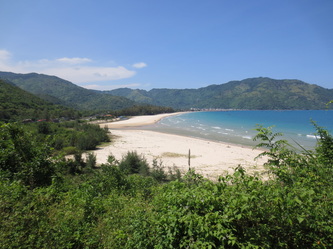

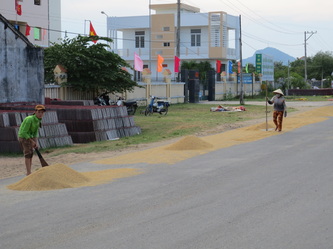
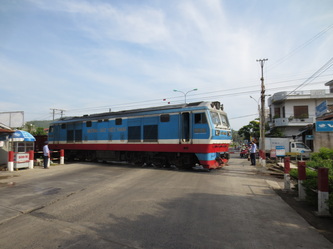

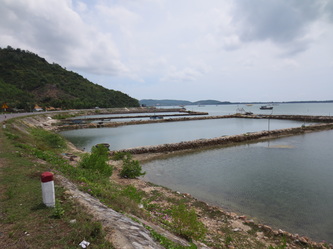

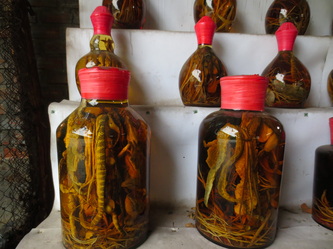
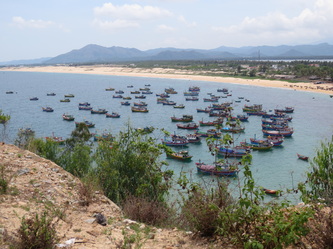
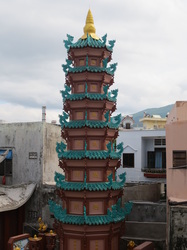
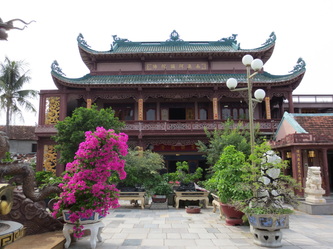

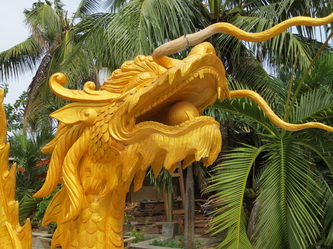

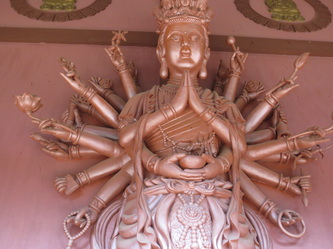
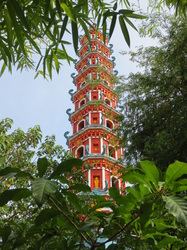
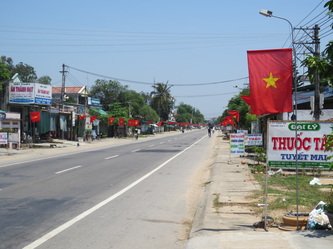
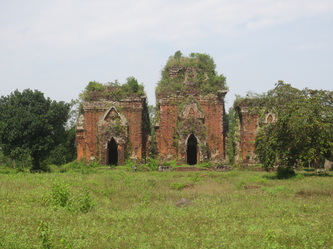
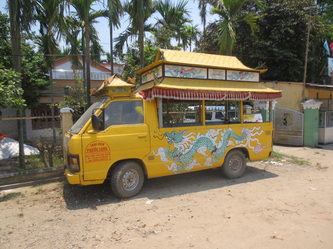
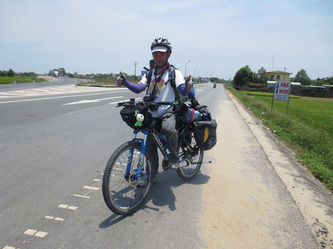
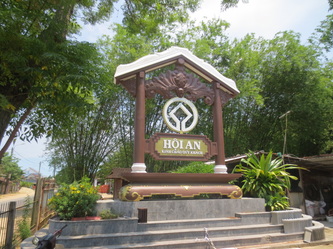
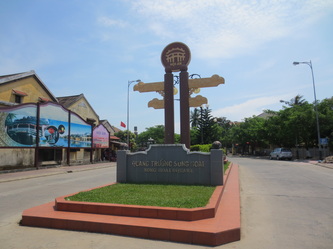
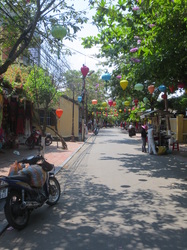
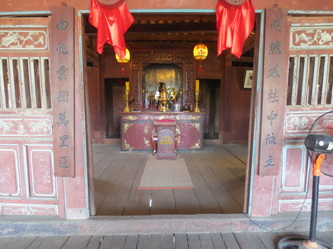
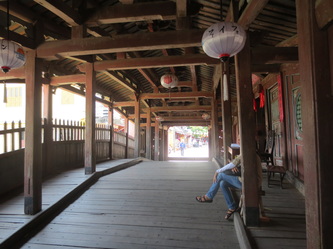

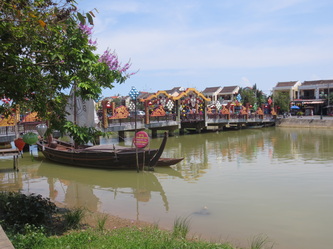

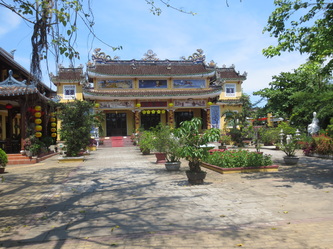
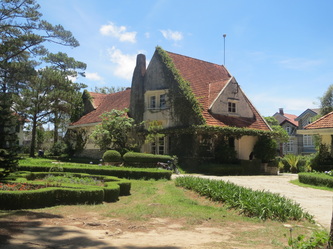
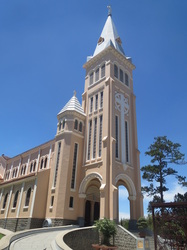

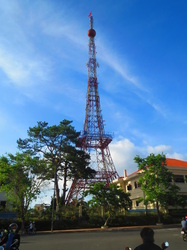

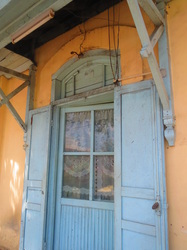
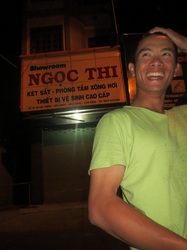
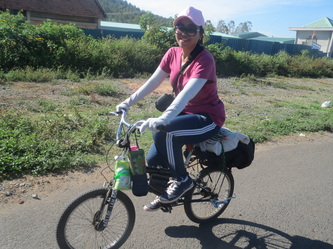
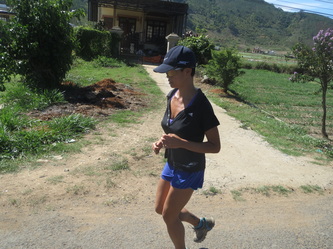
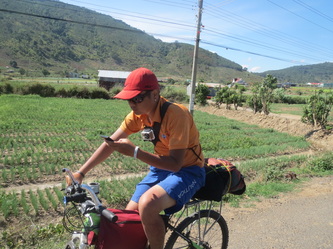
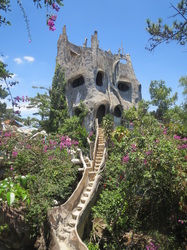
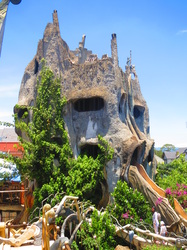
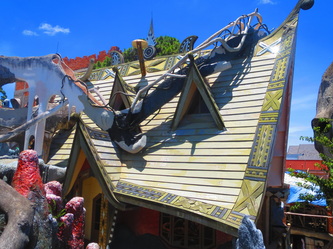
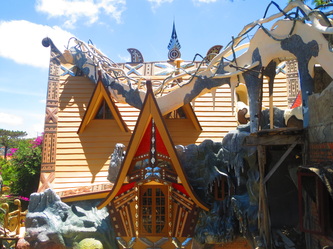

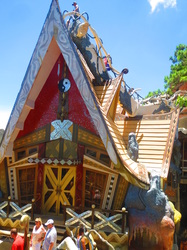


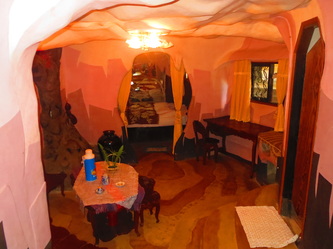



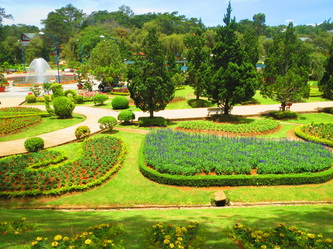
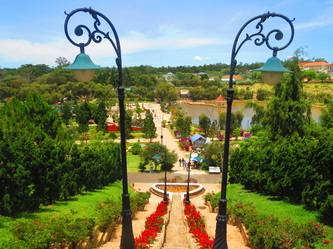
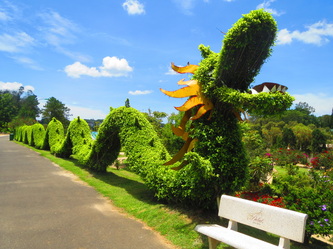
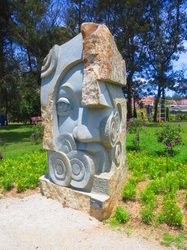

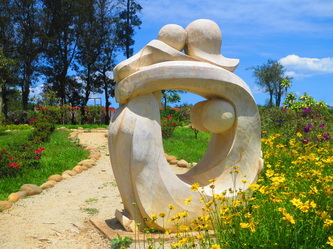

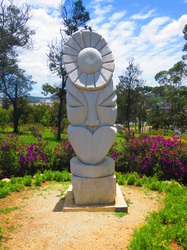
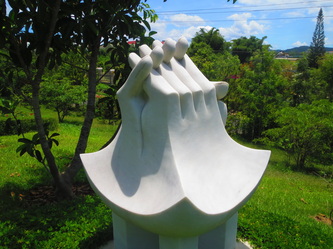
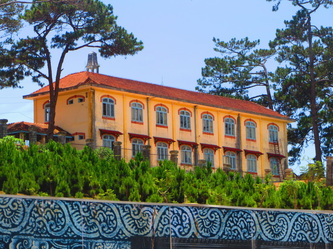

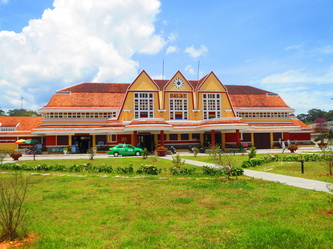
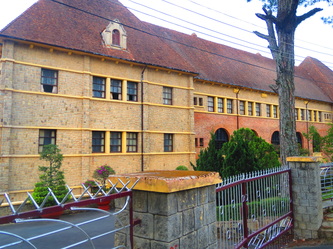
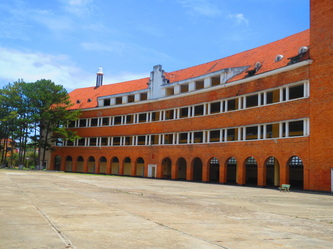


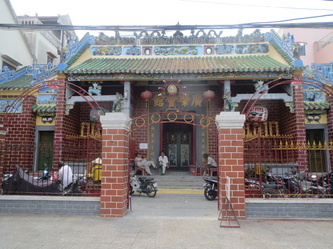


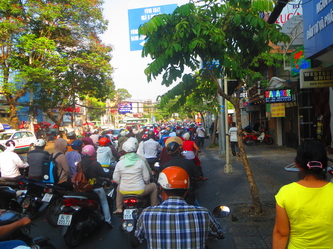
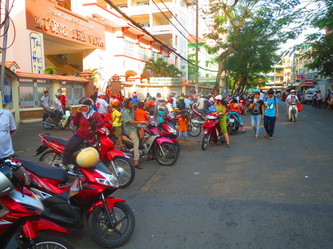
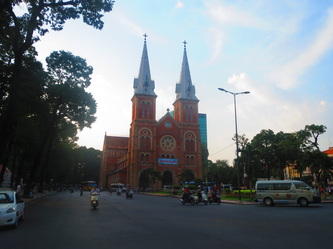

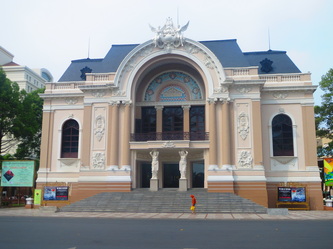
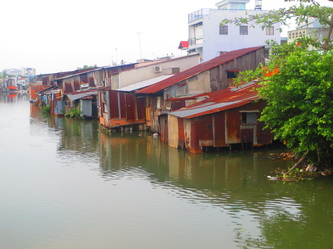
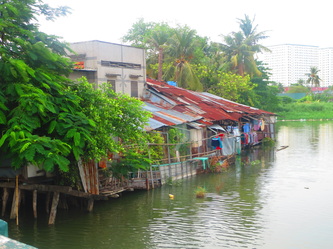

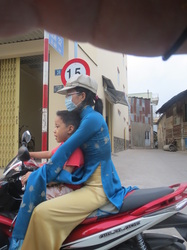
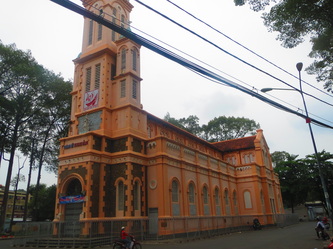
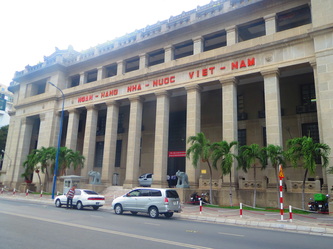
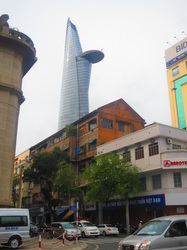

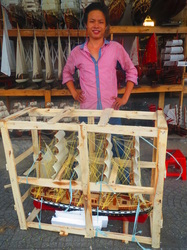
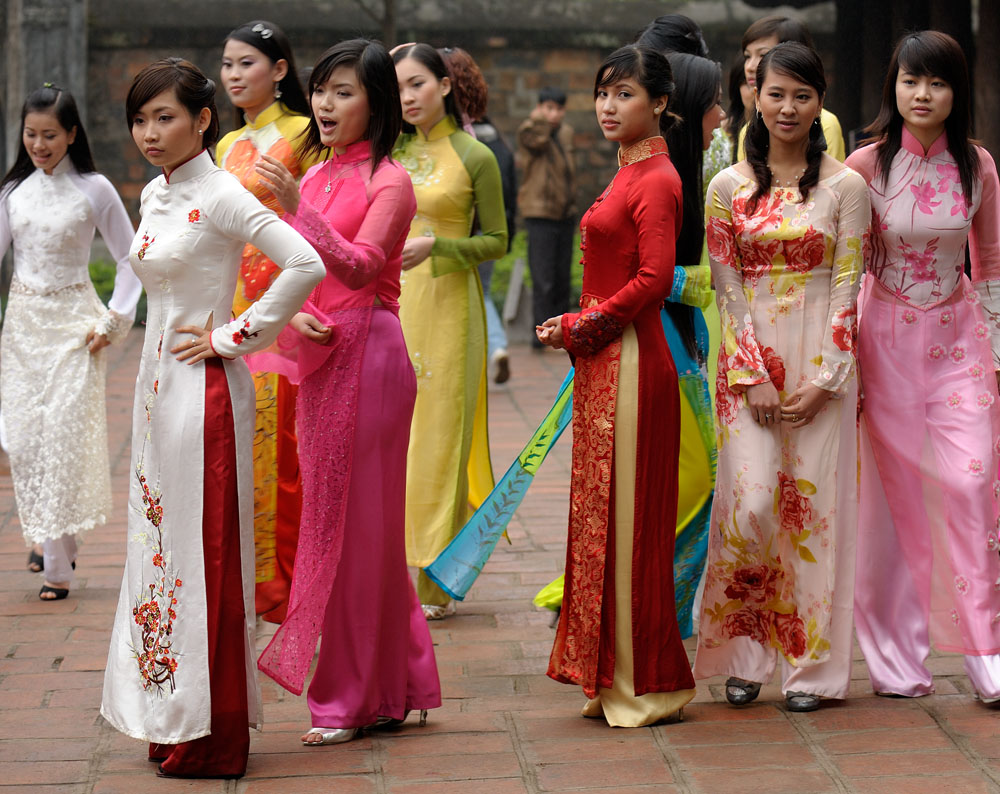
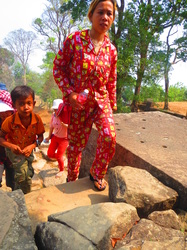
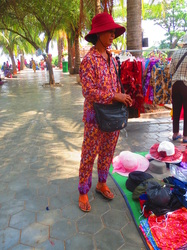
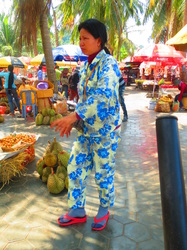
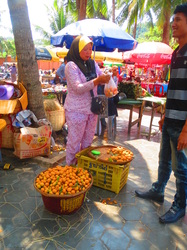
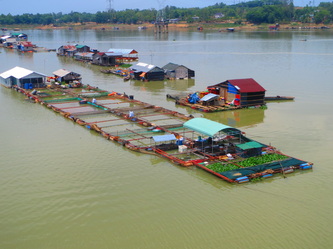


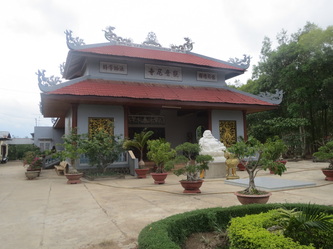
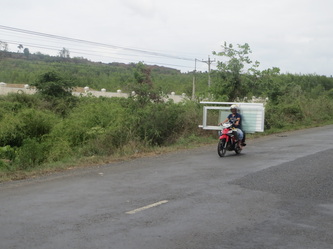
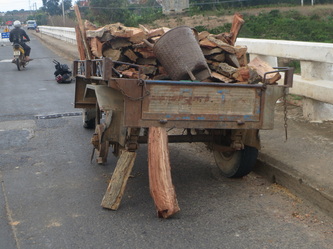



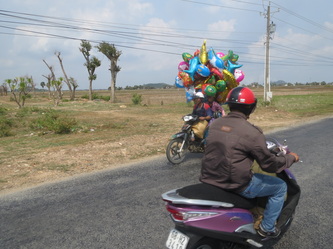

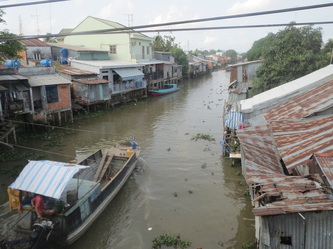
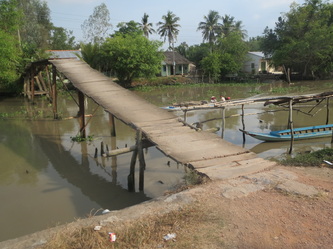
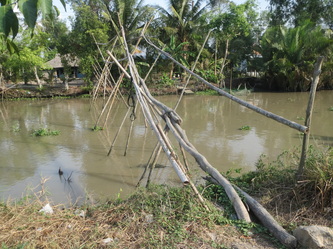
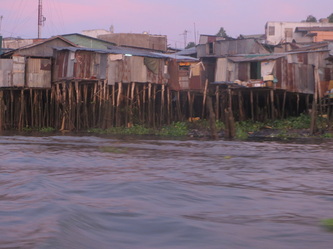
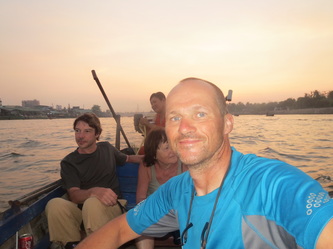
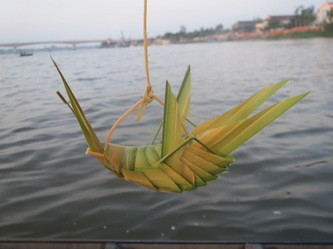
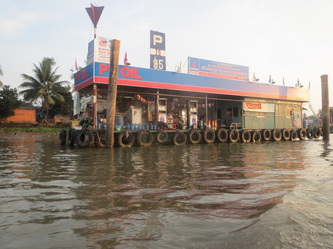
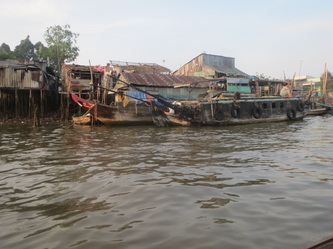
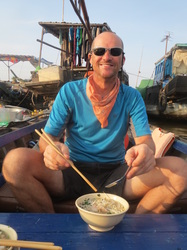


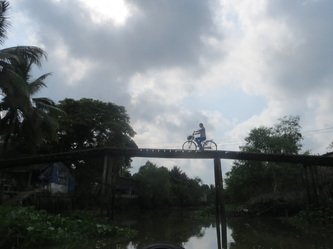
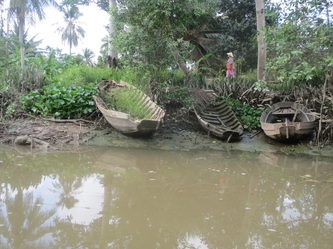

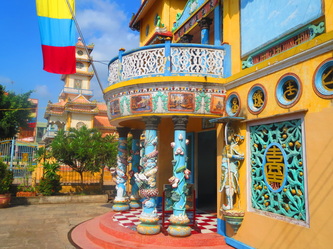
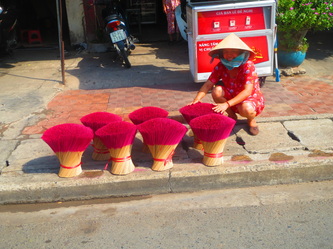

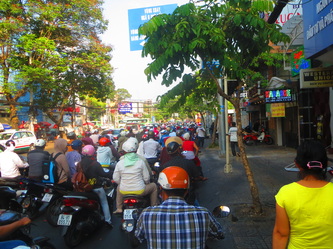

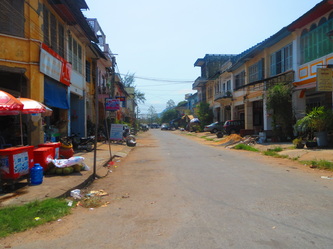
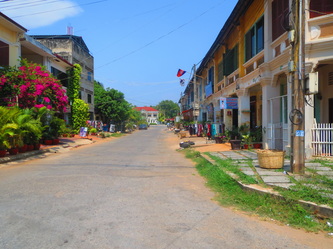


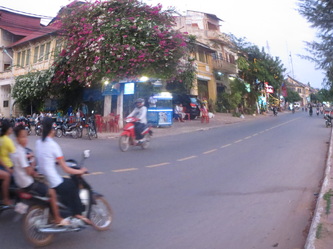

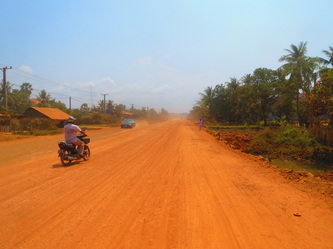

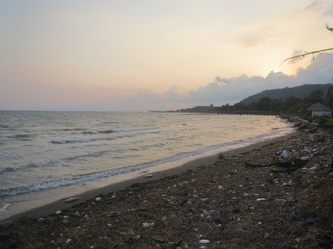
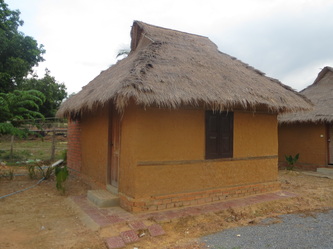
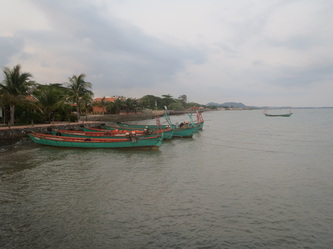
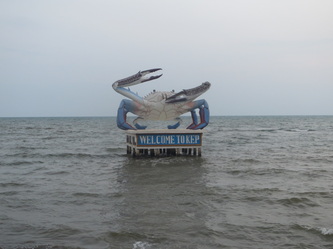
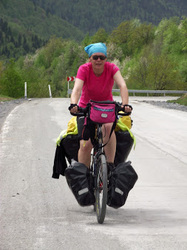

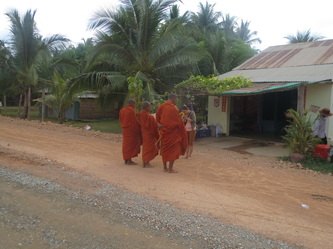
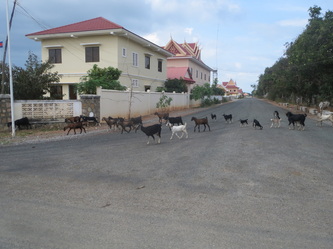
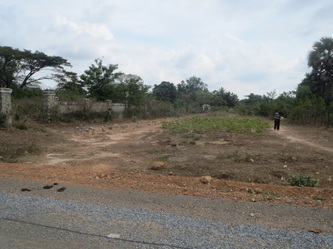

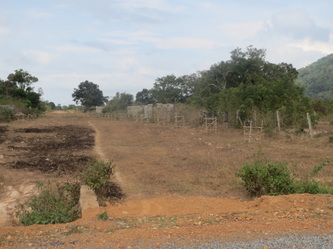

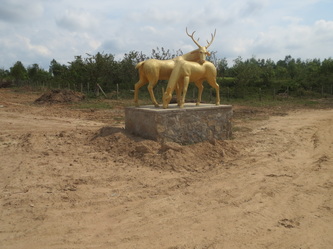
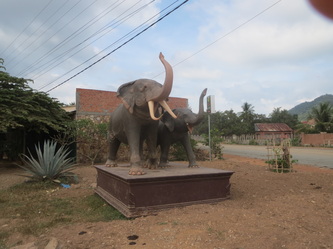
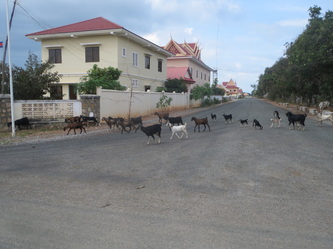
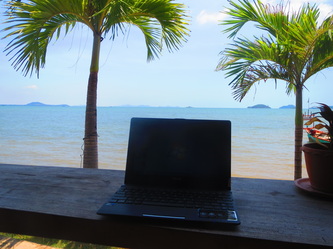
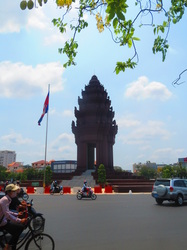
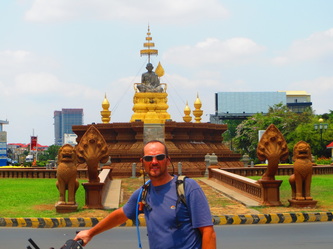
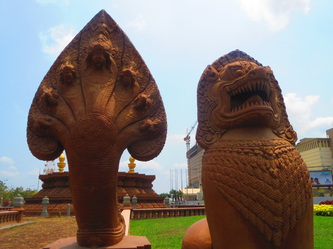
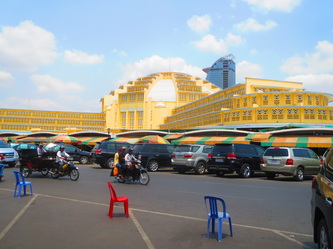
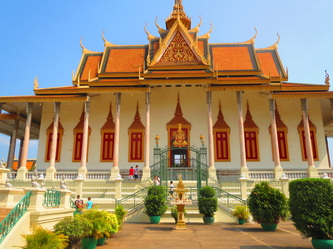
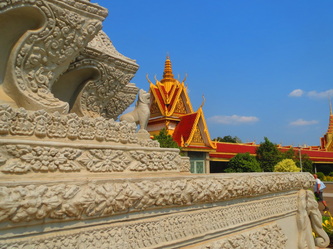

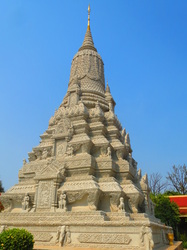


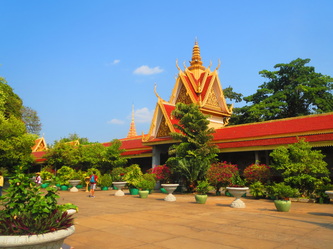
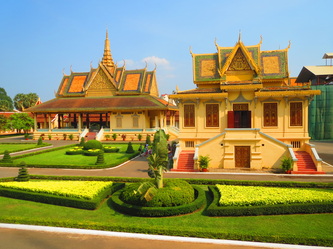
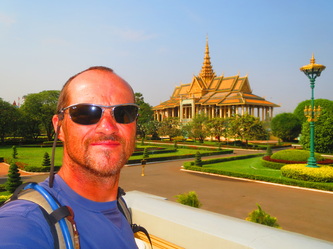

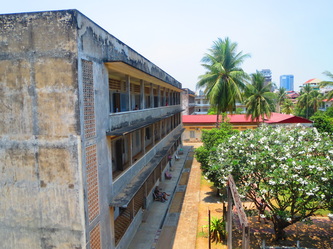
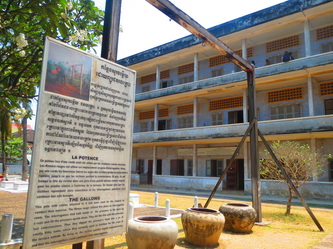

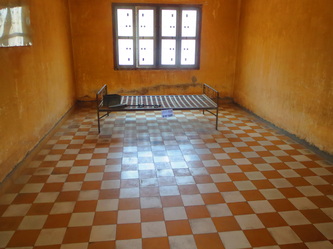



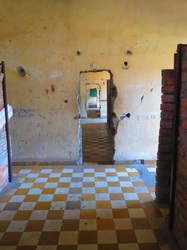
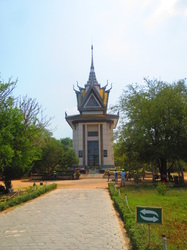
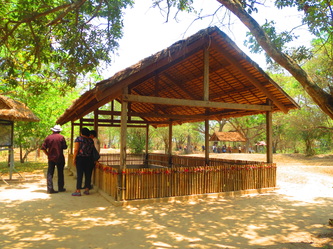


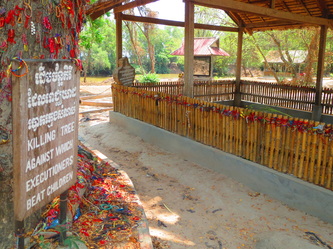
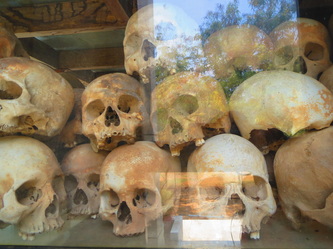




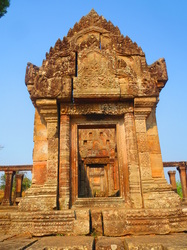
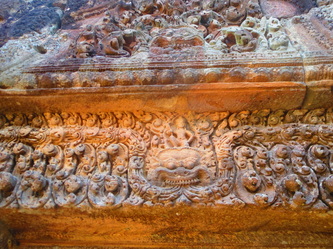
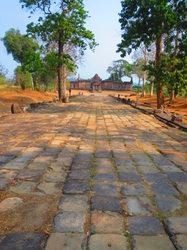
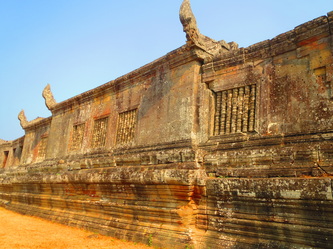


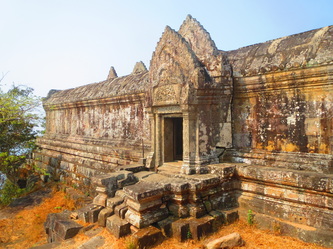


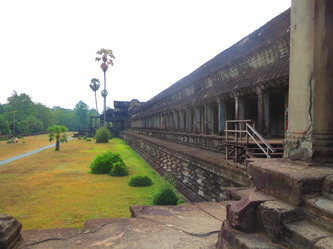
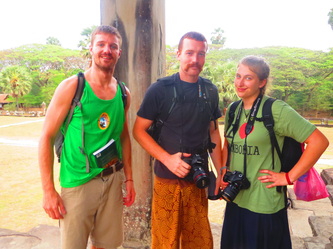

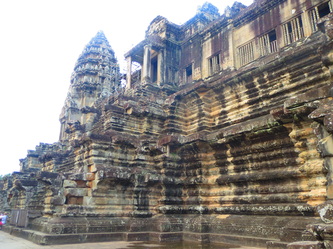

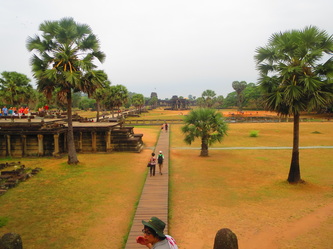
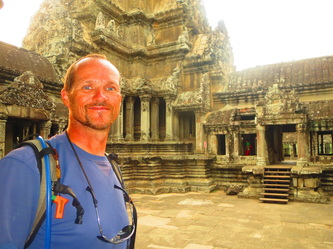
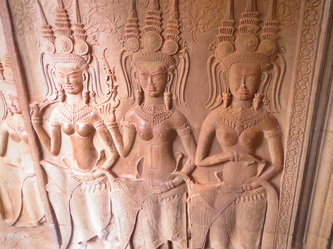
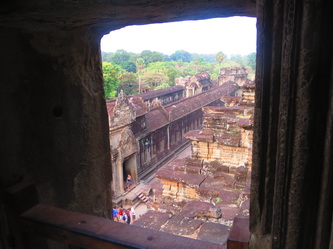


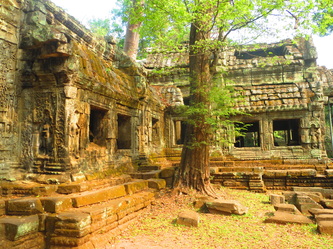



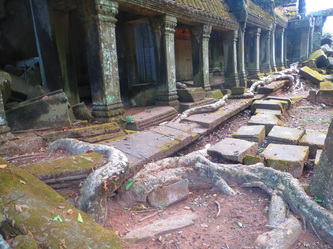




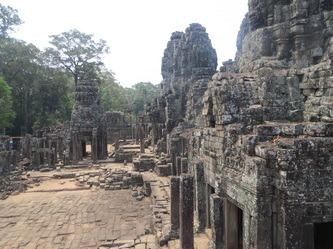
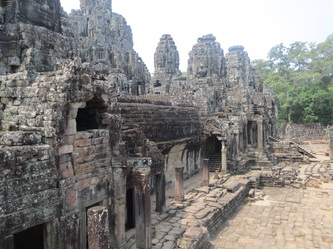
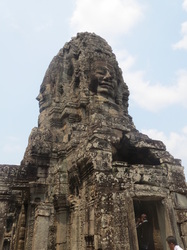



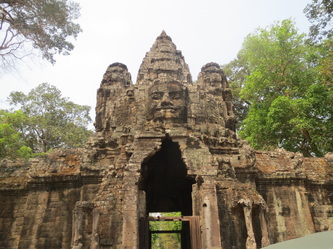




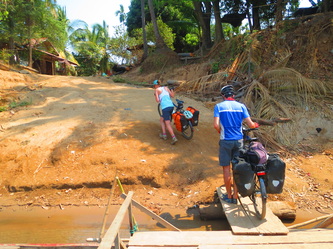
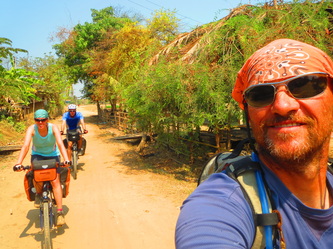

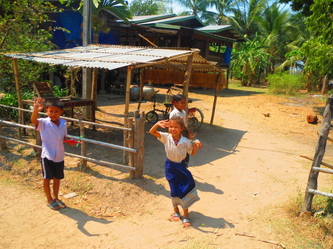

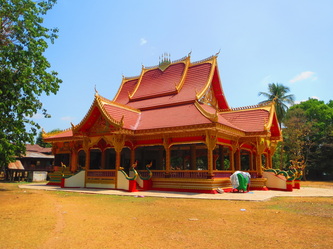
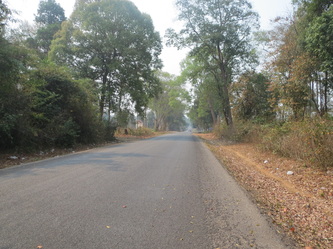

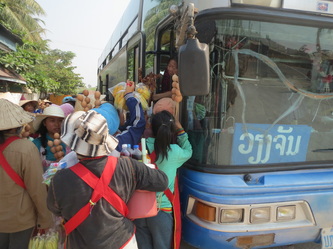
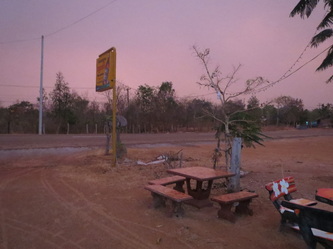



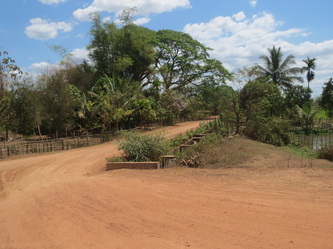
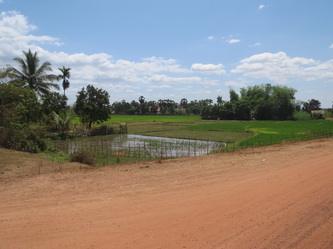

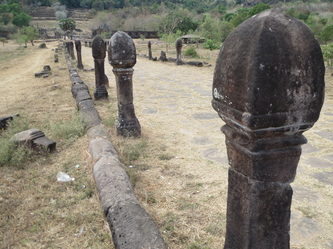
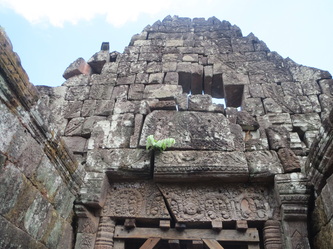

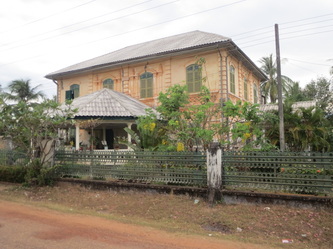
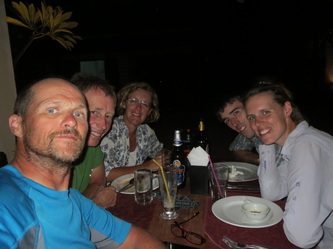
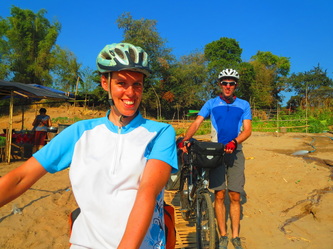
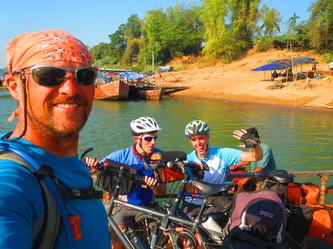
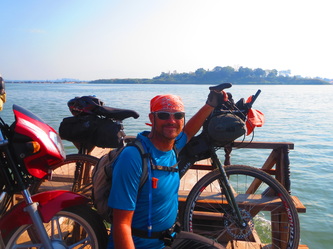
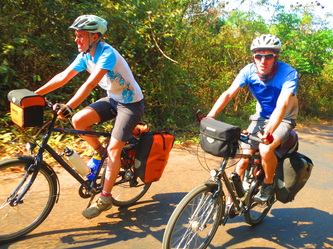
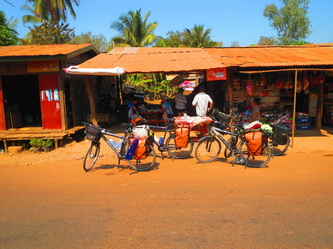
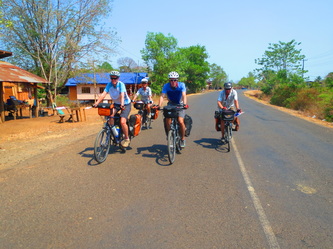
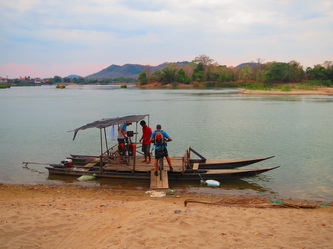
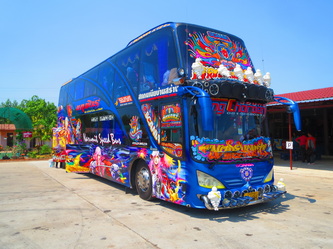
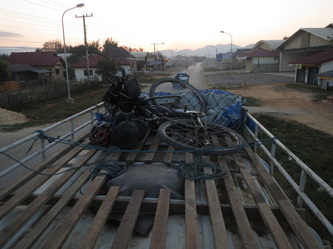


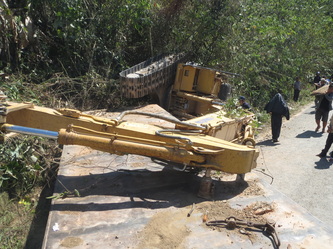
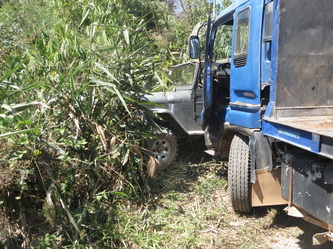
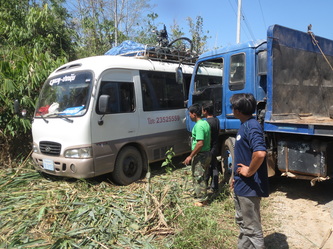
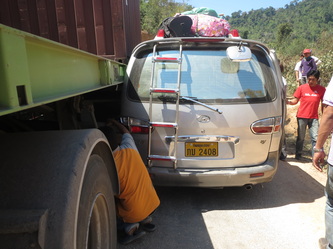

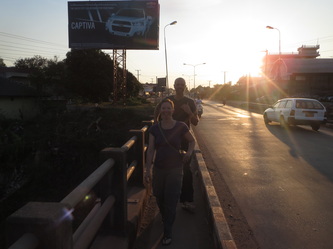
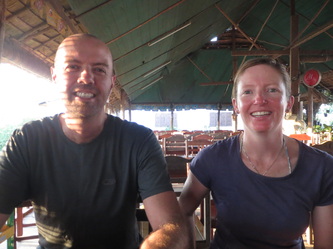
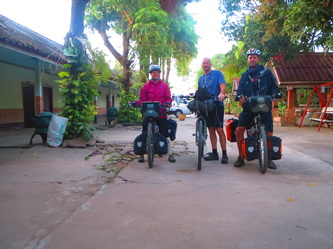
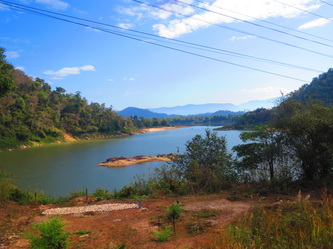
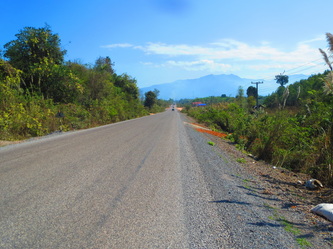

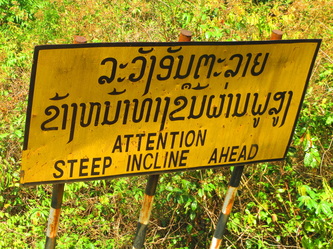
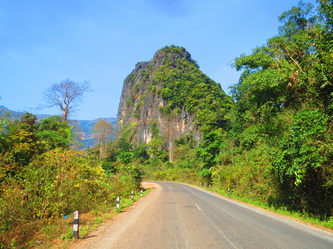
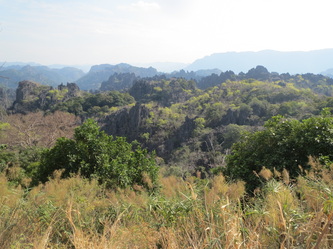
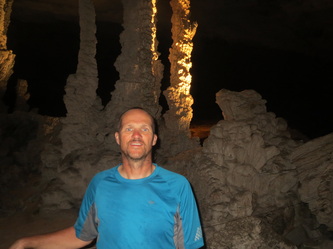
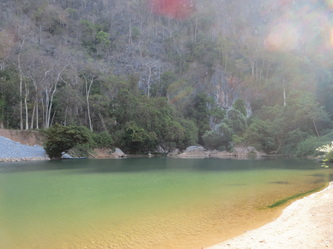

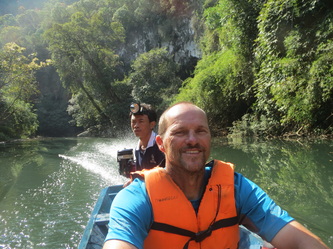

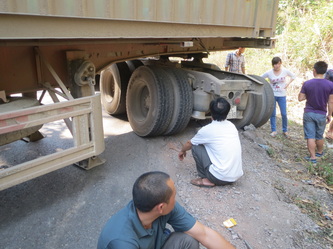

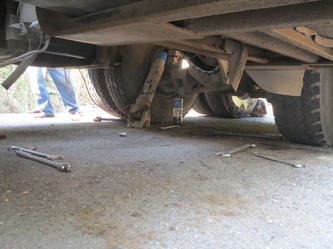
 RSS Feed
RSS Feed